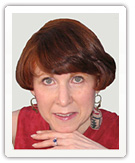e-Tips
Is This Dress Code Professionalism Overkill?
If you are thinking about branding or flexibility for your firm’s people, the 43-page new dress code from Swiss bank UBS AG should get your attention.
(It immediately drove pursuit of dress code stories by ABC and MSNBC, judging from media queries I received the day after Elena Berton’s story “Dress to Impress, UBS Tells Its Staff” appeared on the front page of the Wall Street Journal Money & Finance (!) section, Dec. 15, 2011.)
The level of detail for the dress code UBS is testing with Swiss retail banking staff is astounding. The intent is to impress customers using very precise specifications on garments, including their quality, grooming and hygiene to re-establish confidence in the brand. Further this is intended to mend relations with clients. Pardon my skepticism regarding these lofty and important objectives. Isn’t the strategy a bit superficial considering what we think we know about what it takes to re-establish and mend client relations?
In case you are curious about the code, here are some examples of the specifications according to the article:
- Suits only in dark grey, black and navy blue (conveying competence, sobriety, formalism)
- No trendy eye-glasses
- Requiring light make-up for women (foundation, discreet lipstick, mascara) to enhance one’s personality
- “Properly cared for hair and a stylish haircut increase an individual’s popularity”
- No “designer stubble” and excessive facial hair for men
- When to have jackets buttoned or unbuttoned
- No wearing short-sleeved shirts or cuff links (obviously not together)
- No allowing underwear to show
- And though it can’t show, underwear should be of good quality and easily washable
- No using tie knots that don’t match face and body shape
- Wristwatches are encouraged because they suggest “reliability and great care for punctuality” [Gen Y/Millennials beware: checking the time on your phone doesn’t do the job.]
- And much more….
In all fairness, it was pointed out that this is just a test and may or may not be adopted as permanent policy. But doesn’t it appear to be an extreme over-reaction to the loosening of standards with business casual dress codes in the last 15 years? Who is going to read and absorb 43 pages of the code? Is it more likely to discourage talented people from wanting to work at the bank than to inspire confidence in clients?
Though attire and grooming do have some affect on perceptions of professionalism, how much do they influence a purchasing decision or customer relationship? What would be a happy medium for accomplishing the bank’s branding and mending relations objectives? What would be much more effective for accomplishing those objectives – especially since banking and other services are increasingly being done remotely?
Please give us your thoughts.
Phyllis
© Phyllis Weiss Haserot, 2011. All rights reserved.
* The generational chronology for easy reference: Generations are defined by the similar formative influences – social, cultural, political, economic – that existed as the individuals of particular birth cohorts were growing up. Given that premise, the age breakdowns for each of the four generations currently in the workplace are approximately:
Traditionalists: born 1925-1942
Baby Boomers born 1943-1962
Generation X born 1963-1978
Generation Y/Millennials born 1979-1998
Phyllis Weiss Haserot, The Cross-Generational Voice, is the president of Practice Development Counsel, a business development and organizational effectiveness consulting and coaching firm she founded over 20 years, A special focus is on the profitability of improving inter-generational relations and transitioning planning for baby boomer senior partners/executives (www.nextgeneration-nextdestination.com ).. Phyllis is the author of “The Rainmaking Machine” and “The Marketer’s Handbook of Tips & Checklists” (both West 2010). pwhaserot@pdcounsel.com. URL: www.pdcounsel.com

